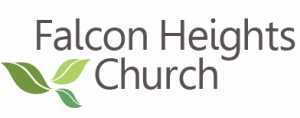Who belongs in God’s neighborhood?
Wireless world, networked ministry — Part II of a series
Sept. 23, 2021
By Rev. Rick King
Much is changing in the institutional church today, and the pandemic sped up the change in the past year and a half. This new series of columns is based on the book, “The Digital Cathedral,” by Rev. Keith Anderson, to expand our concept of Church beyond the bricks-and-mortar, exclusive-membership, financial and flesh-and-blood institution we’re used to, allowing God to birth the NEW reality, already underway in the world.
People in our congregation have been very taken by the example of Peace Lutheran Church in Lauderdale, which has experienced renewed vitality from locating the nexus of their mission and ministry in the wider community, not the church or its building. It all started with finding out what the community needed, and offering what it could to help, whether or not the requests came from church members.
Keith Anderson tells the story of Humble Walk Lutheran Church, an ELCA congregation-in-the-neighborhood in the West End of Saint Paul, and its pastor, Jodi Houge, with a very neighborly, open concept of “who belongs.”
They meet in bars for theological conversation, gather for Bible study at Claddagh Coffee Café on West Seventh, worship in a local park in July and in the common room of a local Jewish retirement community the rest of the year, and are deeply embedded in their local neighborhood.
Where the church sets up for worship and Communion, everything is “unadorned and ordinary,” says Anderson. In contrast to most established churches, Humble Walk Lutheran is not primarily identified with one place or one building, but multiple distinct locations. He goes on to say, “I realized that, without a building, experiencing Humble Walk was, indeed, a walk. Embedded in the life of the West End, the people of the church had literally made their entire neighborhood their cathedral. They see their entire neighborhood as sacred space, holy ground.”
In addition, although it has a growing core of regular participants, the composition of Humble Walk’s congregation is not exclusive, but determined by who shows up on a given day, in a given place. Participating, rather than holding membership, is what counts.
“Humble Walk’s ministry practices are ways of naming as holy the places where people already gather in the West End,” he writes. This makes me wonder what we at Falcon Heights Church would name as holy in our community. Where are the places God is already present, through people doing things for the common good, showing compassion, courage, creativity and resilience?
In talking about “the Digital Neighborhood,” Anderson describes how “the discovery of God in daily life happens not only in local gathering spaces, but digital ones, like Twitter, Facebook, or Pinterest, as well,” noting that 87 percent of Americans use the internet, 71 percent of those say they use it daily, with 68 percent of American adults connecting to the internet through mobile devices” (34). And that was six years ago, when the book was published in 2015!
He cites Timothy Snyder, a doctoral candidate at Boston University, who studies how social media are used in response to tragic events like the Sandy Hook Elementary shootings, and how people turned to social media for comfort, compassion, and prayer. “Our findings suggest that religious practices and faith may not be declining, but they are shifting in surprising and exciting ways…when religious leaders and people of faith turn to social media to express their commitments to creative offerings of prayer, solidarity in the face of suffering, and love in the midst of violence, they demonstrate a positive use of religion in the American public square” (34-35).
How has the pandemic changed how YOU experience church, community, and connectedness?
